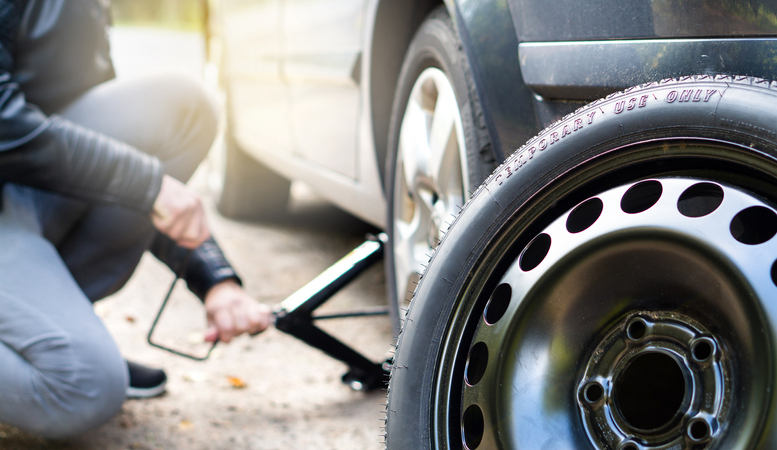Everything Auto Mechanic School Grads Should Know About Driving With a Spare Tire

Replacing a flat tire with a spare is an important rule of the road. While knowing what to do in the event of a flat is important, and spare tires certainly come in handy, many drivers are unsure when it comes to the rules of actually driving with one. As auto mechanic professionals know, driving with a spare tire can be dangerous if the proper precautions aren’t taken, and the rules can change depending on what kind of spare tire a car is equipped with.
If you’re beginning your career as a mechanic, it’s important to know all the facts about spare tires, as this will allow you to give drivers helpful advice in the case of an emergency, and keep them safe on the road. Here are the do’s and don’t’s of driving with a spare.
Spare Tires Explained for Those with Mechanic Training
A vehicle is equipped with a spare tire for one reason: to be used in case of an emergency. Spares are not meant to be used as replacements for a vehicle’s regular tires. There are two main types of spare tires that you will encounter after mechanic training: donut tires (or space-savers) and full-sized spares.

Full-sized spare tires can serve as a replacement for a vehicle’s regular tires, and historically, most vehicles have been equipped with full-sized spare tires. However, over the years most manufacturers have opted to switch over to donut spares due to their smaller size and greater efficiency.
Donut tires are inexpensive and lightweight, improving the fuel economy of the vehicle that carries them. For these reasons, donut tires are a more popular choice among manufacturers. However, these tires are much smaller than regular tires, and they have completely different treads, making them unsuitable for anything other than temporary, emergency use. In this blog, we’ll focus on the rules for using donut tires, as these are most commonly used in today’s vehicles and they can be particularly unsafe if drivers fail to understand their limitations.
How Far (and How Fast) Can You Drive with a Spare?
Once you become an auto mechanic, it’s important to let drivers know that their donut spare should only be used temporarily. While it’s best to advise drivers to consult their vehicle owner’s manual in order to determine the exact distance they’ll be able to travel, you will learn that donut tires are typically able to travel a distance of about 80 km – 113 km. Donut tires are smaller than regular ones, and driving any further than the recommended range could put the driver in harm’s way.

As far as speed is concerned, when driving with a donut spare, those in auto careers should caution drivers not to exceed 80 km/hour. If they’re driving on the highway, they should stick to the right lane and allow other drivers to pass them. Since a donut tire is smaller than a vehicle’s other tires, high speeds can activate a vehicle’s ABS (anti-lock braking system) because the wheel-speed sensors detect the difference in tires, and compromising this system can endanger drivers. Additionally, driving at high speeds can cause damage to a vehicle’s transmission and differential, as the different wheel speeds cause these parts to work harder.
Exceeding the temporary limitations on a donut tire can be a risk to both the driver and the vehicle itself. As a mechanic, it’s important to give drivers the information they need when it comes to operating a vehicle with a spare tire in order, as this will help drivers to avoid the risk of damage or injury.
Understanding Full-Sized Spares
The rules for full-sized spares differ from donut spares, as these tires can serve as a replacement for a vehicle’s blown tire in most cases. However, drivers should have their full-sized spare examined by an automotive professional if they’re planning on using them for longer than a temporary amount of time.
As an auto mechanic, you can make sure that a full-sized spare is safe to drive by first conferring with the manufacturer’s instructions, as the rules may vary. If the spare can serve as a replacement, mechanics can make the necessary adjustments, including putting the spare on the rim of the original tire, as well as conducting a regular tire rotation to put the spare in line with the vehicle’s other tires. Auto mechanics should also check the air pressure on the spare, and look for any signs of cracking and age on a full-sized spare’s rubber. If the full-sized spare tire is deemed safe, it can be used permanently rather than temporarily.
Are you ready to enrol in auto mechanic school?
ATC Cambridge has the program for you. Launch your career today.

